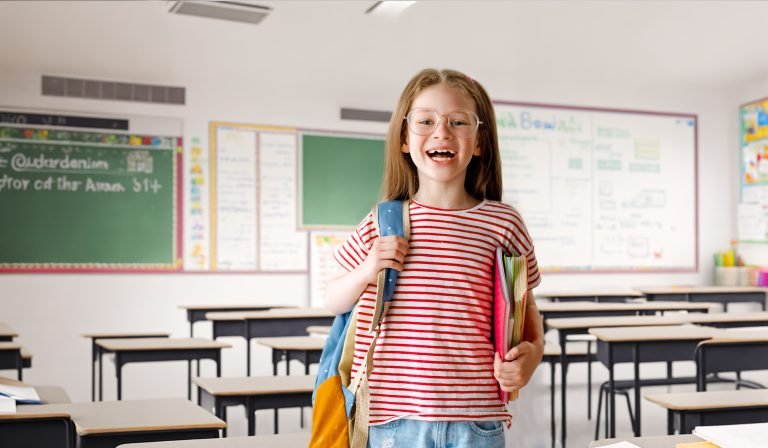Beyond the Buzz: Adapting Whole Body Listening for Diverse Learners

As seasoned school counselors and teachers, we’ve likely come across the concept of Whole Body Listening. This pedagogical approach has been lauded for enhancing student engagement and information retention. However, while its merits are clear, the applicability of Whole Body Listening is not universal. Our classrooms are a mosaic of diverse learners, each with unique needs that may not align with this model. It’s time we acknowledge this diversity and adapt our strategies to ensure that every child is supported in a way that’s conducive to their learning journey.
The Myth of One-Size-Fits-All in Listening
The idea that all students can engage in Whole Body Listening assumes a level of homogeneity that simply doesn’t exist in our classrooms. Learners come to us with an array of backgrounds, abilities, and challenges. Recognizing this is the first step in moving beyond cookie-cutter expectations and towards a more personalized and effective teaching methodology.
Embracing this diversity is more than an educational philosophy; it’s a commitment to every child’s right to learn in a way that honors their individuality. It is a call to discard the “one-size-fits-all” garment we’ve outgrown and tailor a wardrobe that fits the learning styles and needs of each student. By acknowledging the distinct paths our students tread, we cultivate an environment where personalized and effective www.methodologies aren’t just ideals, but everyday realities.
Whole Body Listening, in its traditional sense, can inadvertently exclude those who don’t fit the mold. Yet, in recognizing the myth of uniform listening, we unlock the door to a more inclusive approach. We’re charged with the task of redefining what active listening looks like, understanding that for some, it may not involve eye contact or stillness. For others, it may mean providing alternative means to engage with the material being presented.
The journey away from cookie-cutter expectations towards a more bespoke educational experience is not without its challenges. Yet, it is a path that, when navigated with care and understanding, leads to a richer, more fulfilling destination for both educators and students alike. It paves the way for a learning landscape where each student is met on their terms, where every voice is valued, and where the diversity of our learners is the compass that guides our teaching practices.
The Challenge for Diverse Learners
Students with learning disabilities or attention difficulties might find the physical aspects of Whole Body
Within the walls of our schools, the tapestry of diverse learners stretches far and wide. Picture a student whose attention dances like leaves in the wind, for whom the very act of holding still feels like holding back the tide. For these children, with minds that race and bodies that crave movement, Whole Body Listening is not a challenge; it’s an Everest. The expectation of maintaining eye contact or sitting motionless isn’t just a tall order—it can feel unreachable, like asking them to quiet the sea.
Consider also the students who navigate the sensory carnival that is a typical classroom. The hum of fluorescent lights, the shuffle of papers, the symphony of whispers and laughter—these can crescendo into an overwhelming cacophony for a child with sensory sensitivities. Whole Body Listening, with its requirement for undivided attention, becomes not just another classroom rule, but a Sisyphean task. For them, the ‘quiet’ of a classroom is loud, and the ‘stillness’ can feel chaotic.
And let us not forget the silent battles of those with social-emotional challenges. Anxiety, like an uninvited shadow, can follow a child throughout their day, turning the simple act of listening into a labyrinth of stress and self-doubt. Whole Body Listening, with its inherent demand for external calm and collectedness, overlooks the internal turmoil such students may be experiencing. It asks them to stand still in the eye of their emotional storm.
For these students, the expectations of Whole Body Listening can loom large, casting long shadows over their educational experience. As educators and counselors attuned to the needs of our students, we must look beyond these shadows. We must see the child for whom stillness is a barrier, for whom sensory input is a floodgate, and for whom anxiety is the loudest voice in the room. By recognizing these challenges, we take the first step toward a truly inclusive approach—one that adapts to the rhythms of all learners and composes a symphony of understanding.
Cultural Considerations in Listening Practices
The cultural mosaic of our classrooms enriches the educational experience, bringing a wealth of perspectives to our shared learning space. Yet, this diversity calls for a nuanced understanding of listening practices across cultural boundaries. Traditional Whole Body Listening emphasizes behaviors that, although common in some cultural contexts, do not universally translate into respect and attentiveness. Direct eye contact, often perceived as a sign of engagement in Western pedagogy, may contravene the norms of respect in other cultures, where it is customary to avert one’s gaze as a sign of deference.
As educators, it behooves us to approach listening with cultural sensitivity, recognizing that non-verbal cues such as eye contact, body posture, and even silence carry different connotations around the world. The challenge—and opportunity—before us is to cultivate an environment where diverse cultural interpretations of respect and attention are not just acknowledged but embraced.
To foster a truly inclusive classroom, we must engage in active dialogue with our students and their families, understand the cultural dimensions of communication, and adapt our listening expectations to honor these differences. In doing so, we build a bridge across the gaps that cultural variances present, affirming the value of each student’s heritage and ensuring that respect and comfort are the cornerstones of our listening practices.
It is in the synthesis of these varied practices that we discover a middle ground, a place where every student can stand with confidence and feel that their cultural identity is not only recognized but respected. As we adapt our strategies to include a wider range of listening and engagement cues, we send a powerful message: every student is seen, every student is valued, and every student has a voice in our classrooms.
It’s also essential to remember that not all cultures emphasize the same listening behaviors. In some cultures, direct eye contact is not the norm and may be considered disrespectful. Our expectations for listening need to respect these cultural differences and find a middle ground that allows all students to feel comfortable and respected.
Early Development and Whole Body Listening
When we consider Whole Body Listening through the lens of developmental appropriateness, it becomes evident that what we ask of our students must align with their developmental capabilities. For our youngest scholars, who are just beginning to navigate the intricate dance of social cues and educational expectations, the rigorous requirements of Whole Body Listening may indeed be a bridge too far. Their cognitive and emotional landscapes are in the tender stages of growth, where the seeds of skills like attention and self-regulation are only just being sown.
Similarly, students with developmental delays may find the structured demands of Whole Body Listening to be a discordant match for their individual rhythm of growth and learning. It’s akin to asking a sapling to bear the same fruit as a mature tree—it’s not only unrealistic but dismisses the natural progression of development. This recognition is pivotal; it underscores the need for patience and celebrates each small step in a child’s growth as a milestone.
In these early stages of development, our educational approaches should mirror the nurturing warmth of a gardener tending to young plants. Our expectations must be tempered with the understanding that development is not a race but a journey—one that each child embarks upon at their own pace. This journey is punctuated not by uniform milestones but by a spectrum of individual achievements that, when acknowledged and supported, foster a sense of accomplishment and self-efficacy in young learners.
As educators, we must therefore be attuned to these developmental distinctions, ensuring that our instructional methods are not only age-appropriate but also individually attuned. By doing so, we prevent the kind of frustration that can arise from misaligned expectations and instead cultivate a learning environment that is both supportive and empowering, allowing our youngest and most vulnerable students to flourish.
Tailoring the Approach: Accommodations and Support
In the realm of education, flexibility is not merely an asset; it is a fundamental principle. The cultivation of listening skills in students with diverse needs requires us to be educational chameleons, adept at adapting our methods to suit the varied landscapes of learning. By integrating visual cues into our teaching, we provide a universal language that transcends auditory limitations, offering a clear and accessible pathway for understanding listening expectations.
The art of repetition is another tool in our pedagogical kit. It serves as the gentle but firm hand that guides students through the landscape of new knowledge. Through repeated exposure, concepts are etched into memory, allowing students the luxury of learning at a pace that respects their cognitive processes. This iterative approach lays down the neural pathways that form the bedrock of enduring understanding.
Individualized instruction is the cornerstone of a bespoke educational experience. It is the recognition that each student’s mind is a unique ecosystem, thriving under specific conditions. When we provide tailored instruction, we affirm the individual learner, crafting an educational experience that speaks directly to their needs, their strengths, and their potential.
Let us not overlook the transformative power of positive reinforcement. Like sunlight to young seedlings, acknowledgment and praise can catalyze growth, nurturing students’ confidence and cultivating a fertile environment for learning. This encouragement serves as a powerful motivator, reinforcing desired behaviors and fostering an intrinsic love of learning.
By intertwining these elements—visual cues, repetition, individualized instruction, and positive reinforcement—we weave a supportive tapestry that uplifts all learners. Our classrooms become incubators of possibility, where every student is equipped with the tools they need to engage, understand, and succeed.
Beyond Compliance: Understanding and Empathy
Our goal should never be mere compliance; it should be understanding and growth. When we replace rigid adherence to Whole Body Listening with empathy and support, we foster an environment where students feel seen and heard, and where they’re more likely to develop the skills, they need in their own time and in their own way.
In the pursuit of educational excellence, our aspirations must extend beyond the realm of mere compliance to a profound engagement with understanding and empathy. The essence of Whole Body Listening must evolve from a strict doctrine to a flexible concept, one that is imbued with the spirit of compassion and adapted to the lived experiences of each student. When we prioritize empathy, we create a climate of emotional safety, a nurturing space where students are assured that their voices and challenges are acknowledged.
Understanding and empathy are the twin pillars upon which a supportive educational environment is built. By actively listening to our students and seeking to understand their perspectives, we validate their individual experiences. This validation becomes the fertile ground from which trust grows, allowing students to blossom at a pace that honors their personal development trajectory.
As we steer away from rigid expectations, we allow room for authentic growth and self-discovery. A student who feels understood is more likely to engage in the learning process, not as a passive recipient but as an active participant. Empathy enables us to tailor our teaching strategies, to recognize the silent struggles, and to offer support that resonates with the inner worlds of our learners.
Embracing this empathetic approach transforms the landscape of learning. It shifts the focus from enforcing discipline to fostering discipline, from demanding attention to inviting engagement. Here, students are not molded but unfolded, revealing the depth of their potential in an atmosphere that cherishes their individuality.
Therefore, let us as educators commit to a pedagogy that is anchored in empathy, that respects the diverse journeys of our students, and that seeks, above all, to cultivate an environment where understanding and growth are the benchmarks of success. In this environment, Whole Body Listening becomes not a mandate but a dialogue—one that speaks to the hearts and minds of students and guides them towards the fullness of their capabilities.
Practical Strategies for Inclusive Listening
In the classroom, this might mean offering a quiet corner for a child who gets easily overstimulated or allowing a student to express they’re listening in a way that feels comfortable to them. It means being creative and proactive, not reactive and punitive.
In crafting an inclusive listening environment, our approach should be as multifaceted as the students we serve. This commitment to inclusivity often begins with simple, yet impactful, adjustments to our classroom setup and instructional methods. For instance, providing a quiet corner or a sensory-friendly space in the classroom can be a sanctuary for students who are easily overstimulated. This small haven of tranquility within the bustling classroom environment allows them to recalibrate and engage with learning materials at their own pace, without the pressure of constant stimulation.
Moreover, recognizing and honoring different modes of expressing attentiveness is crucial. Some students might demonstrate their engagement not through eye contact or sitting still, but perhaps through doodling, fidgeting, or looking away to concentrate better. It’s about valuing these diverse expressions of listening and understanding that engagement does not always conform to traditional norms.
Creativity in our teaching methods is another key element. This could involve using technology, like audio-visual aids, to cater to various learning styles, or incorporating movement and physical activities into lessons for kinesthetic learners. It’s about thinking outside the conventional teaching box and harnessing a range of strategies to reach every learner.
Proactivity in anticipating and addressing the diverse needs of our students is also vital. This means not waiting for a challenge to manifest, but rather, consistently seeking to understand and accommodate different learning preferences and requirements from the outset. It’s about building an inclusive classroom culture where differences are not just accommodated but celebrated.
Stepping away from punitive responses to non-traditional listening behaviors is another crucial aspect. Instead of reprimanding students for not adhering to conventional listening poses, we should seek to understand the underlying reasons for their behavior and provide support accordingly. This approach fosters a positive, supportive learning environment, encouraging students to participate and engage in ways that feel natural and productive to them.
By implementing these practical strategies, we transform our classrooms into inclusive spaces where every student feels valued and understood. This inclusivity not only enhances the learning experience for students with diverse needs but enriches the educational journey for all students, creating a more empathetic, understanding, and effective learning community.
The Educator’s Role in Listening Diversity
The role of educators in nurturing and validating diverse listening and learning styles is both critical and complex. We stand at the crossroads of education and individuality, tasked with the responsibility of guiding each student through their unique learning journey. This role extends beyond mere instruction; it encompasses the understanding, acknowledgment, and celebration of the myriad ways in which students absorb and process information.
To effectively embrace this role, our commitment to professional development must be ongoing and dynamic. It involves immersing ourselves in the latest educational research and methodologies that focus on diverse learning styles and inclusive teaching practices. By continually updating our knowledge and skills, we become better equipped to identify and respond to the varied needs of our students, adapting our teaching strategies to meet them where they are.
Cultivating a deep awareness of our students’ needs is another fundamental aspect of our role. This requires a keen observation, active listening, and empathetic engagement with each student. Understanding their backgrounds, experiences, and challenges allows us to tailor our approach, making learning more accessible and meaningful for them. It’s about building a connection that transcends the traditional teacher-student dynamic, fostering a relationship based on mutual respect and understanding.
Moreover, as educators, we must serve as advocates for listening diversity. This includes not only adapting our teaching methods but also fostering an inclusive classroom culture. We need to educate our students on the importance of diversity and inclusivity, helping them understand and appreciate the different ways their peers learn and express themselves. By doing so, we not only support individual students but also cultivate a classroom environment that is empathetic, respectful, and conducive to learning for all.
Our role in listening diversity also involves collaboration with other professionals, such as school counselors, special educators, and speech and language therapists. Working together, we can create comprehensive support systems that address the holistic needs of each student, ensuring that no child is left behind due to their unique learning style.
In embracing this multifaceted role, educators can truly make a difference in the lives of their students. By recognizing and validating the diversity of listening and learning styles, and committing ourselves to ongoing professional development and awareness, we create a learning landscape where every student has the opportunity to thrive, develop, and succeed.
Resources for Expanding Your Toolkit
There are many resources available for educators looking to expand their approach to Whole Body Listening. From lesson plans that account for a wide range of abilities to guides on inclusivity and diversity in the classroom, we have the tools we need to ensure that our students’ individual needs are met.
Conclusion
Whole Body Listening is indeed a valuable skill, but it’s not a one-size-fits-all solution. As educators, it’s our responsibility to adapt our teaching to meet the needs of all our students. With understanding, empathy, and the right strategies, we can ensure that each child is equipped to succeed.
I encourage you to explore these ideas further. Check out the Whole Body Listening Lesson for Kids Resource and the “Creating a Classroom for All – Accommodations and Strategies for Diversity and Inclusion”. Share your experiences and strategies with your colleagues. Together, we can create classrooms where every student has the opportunity to thrive.














